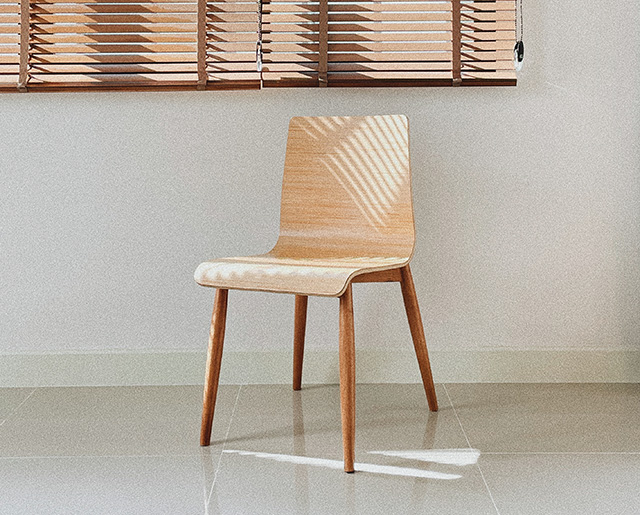Everyone is probably aware of the physical and mental benefits of Yoga. In fact, even high school and college football teams are known to have some Yoga exercises in their routines. And among adults who practice Yoga regularly, there is also an increase in focus on good nutrition.
Recently, though, Yoga has expanded to people who have limited mobility for many reasons – they may have chronic conditions; they may be seniors; or they may simply be people who spend most of their days in a chair at their place of work.
 Chair Yoga is done while seated or standing and using a chair for support
Chair Yoga is done while seated or standing and using a chair for supportThe Origins of Chair Yoga
Chair Yoga was first developed by a traditional Yoga instructor, Lakshmi Voelker-Binder, for a student who suffered from arthritis. That was in 1982 but it has really evolved since then, and more and more people are latching onto the practice as their primary fitness routine.
Basically, chair Yoga is a modification of traditional Yoga, so it can be done while seated or standing and using a chair for support.
What are the Benefits?
There are plenty:
- Increases flexibility and balance: This decreases the potential of injury, especially for seniors. And greater lower-body flexibility also helps to prevent trips and falls.
- Improves strength and muscle tone: This is important for people of all ages, especially for those who have a sedentary work or lifestyle. Keeping muscles toned keeps a body looking more fit too.
- Boosts sense of well-being and mood: Just like any other kind of exercise, Yoga causes the brain to release endorphins, those feel-good hormones. And that results in lowered anxiety. Some research has shown that those who practice chair Yoga regularly report lowered levels of stress, just as they do with traditional Yoga.
- Reduces effects of chronic conditions: These include sugar levels, blood pressure, and heart rate. There is also some research that shows that chair Yoga reduces chronic pain.
Who Benefits from Chair Yoga
The short answer is almost everyone. But certain groups of people seem to benefit the most:
- Those with limited mobility. This condition crosses all age groups, including those with arthritis, physical disabilities, and injuries that prevent other forms of exercise.
- Those who work in an office and sit at their workspace throughout the day. Just 15 minutes of chair Yoga during that day (and 15 minutes more in the evening) can relieve both physical and mental stress and improve overall mood.
- Seniors. Chair Yoga is a low-impact and safe exercise that will reduce risks of injury and increase muscle tone and both upper- and lower-body strength and flexibility.
What is an Ideal Regimen for Chair Yoga?
There is no perfect answer here. But everyone who chooses to adopt this exercise regimen should commit to it at least 3-4 times a week. Others commit to a daily routine, sometimes twice a day. The best advice is probably to start at a lower rate and gradually increase the times and durations over time.
Now, there is a common issue that many people face when they choose to improve their lives through exercise. Doing it alone is never a good idea. It’s best to have a buddy so that you can motivate and monitor each other. If you don’t have such a person, join an online dating site and match up with someone who shares your goal to get in shape. You can video chat while you both do your chair Yoga and keep each other on track.
How to Begin?
There are probably classes available in your community – check local community centers, the “Y,” or even gyms.
If you don’t live in close proximity to these resources or you have limited mobility, check out online video classes that you can download and have at your disposal on your own time.
In the End…
Remember this: the goal is to get your body moving, to tone and strengthen, and to maintain physical and mental health. Chair Yoga is an excellent choice for people of all ages and lifestyles and comes with some great benefits. Try it out.
Related Pages
- A Yoga Workout For Fitness
- Yoga Sport — competitive yoga involving the performance of yoga positions (asanas) in sporting competitions.
- Benefits of Yoga for Footballers
- What is Yoga?
- Books on stretching and yoga
- The Wim Hof Method — incorporates breathing exercises and mental focus, important elements of yoga training.
- Active stretching list
- The Pilates Training Method
- Bodyweight training
- Balance training
- More Fitness Workouts


 Upcoming Events
Upcoming Events